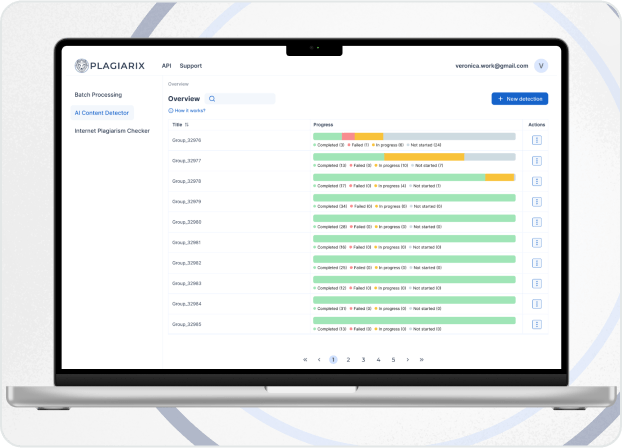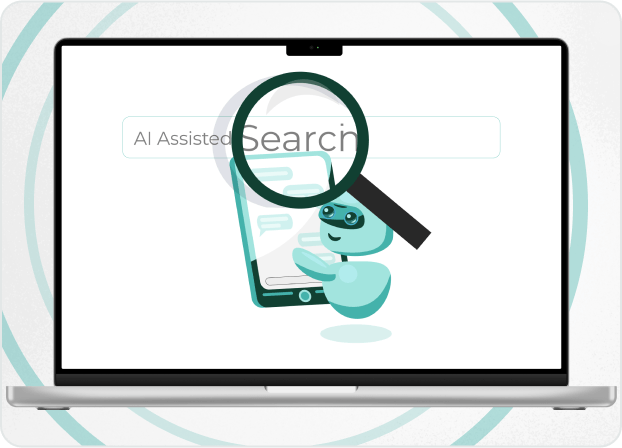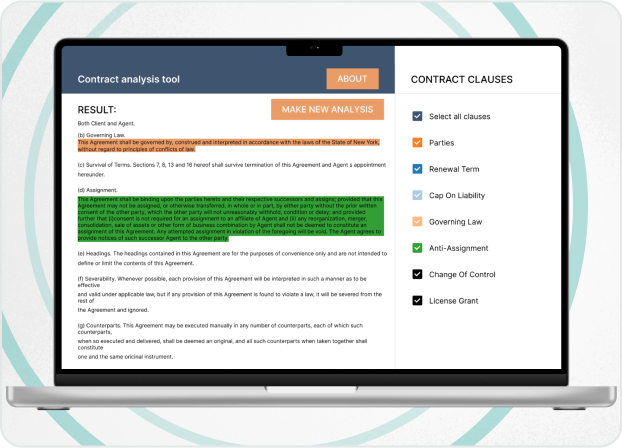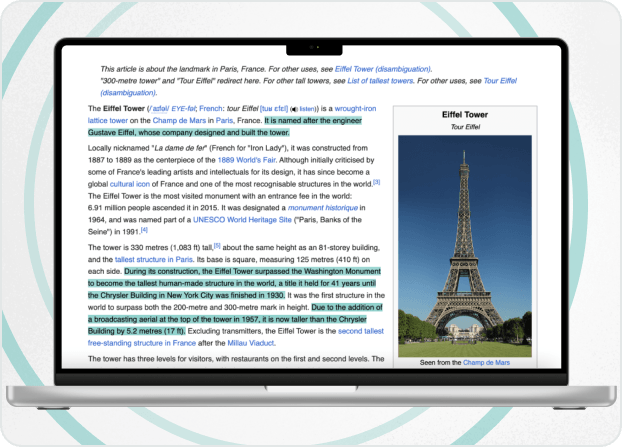
Expert’s Thoughts

"In 2025, mobile app success goes beyond just selecting native, hybrid, or PWA – it also requires anticipating future technological shifts. Extended reality (XR), decentralized applications (dApps) and advanced cybersecurity – this is only a small part of technological updates and improvements in the mobile industry.
Through that, forward-looking businesses should prioritize flexibility and scalability both in app architecture and in mobile development practices to swiftly adopt emerging technologies. Silk Data presents this blogpost as an overview and guide to the main app types for mobile. You’ll see how they work, what they are based on, and how to choose the right type according to your business needs."
Yuri Svirid, PhD. — CEO Silk Data
Developing Mobile Apps in 2025: Your Complete Guide to Types of Mobile Apps
It’s 2025, and your phone is no longer just a device — it’s your AI-powered assistant, fitness coach, shopping buddy and entertainment hub – all wrapped into one. Mobile apps have evolved far beyond simple digital consumer products. Now, they predict your needs, adapt in real-time and blend seamlessly into daily life.
But here’s the big question: If you’re building an app today, which type should you choose?
- Should you go native for blazing-fast performance?
- Opt for a hybrid app to save time and money?
- Would bet on Progressive Web Apps (PWAs) for instant reach?
This guide will walk you through the key app types, helping you understand the pros, cons, and specific use cases of each.
Key Takeaways
- Native apps excel in performance and UX but require higher budgets and platform-specific development.
- Hybrid Apps strike a balance with cross-platform compatibility and lower costs, though performance lags behind native.
- PWAs offer instant reach, offline access, and low development costs but lack advanced hardware features. Best for content-driven apps (news, blogs) or startups testing the market.
- AI is transforming apps — think hyper-personalization, voice/visual interactions, and proactive automation.
Mobile Apps: Market Insights
The mobile app industry hit $252.89 billion in value in 2023 and is on track to keep expanding at a steady 14.3% yearly growth rate until 2030.
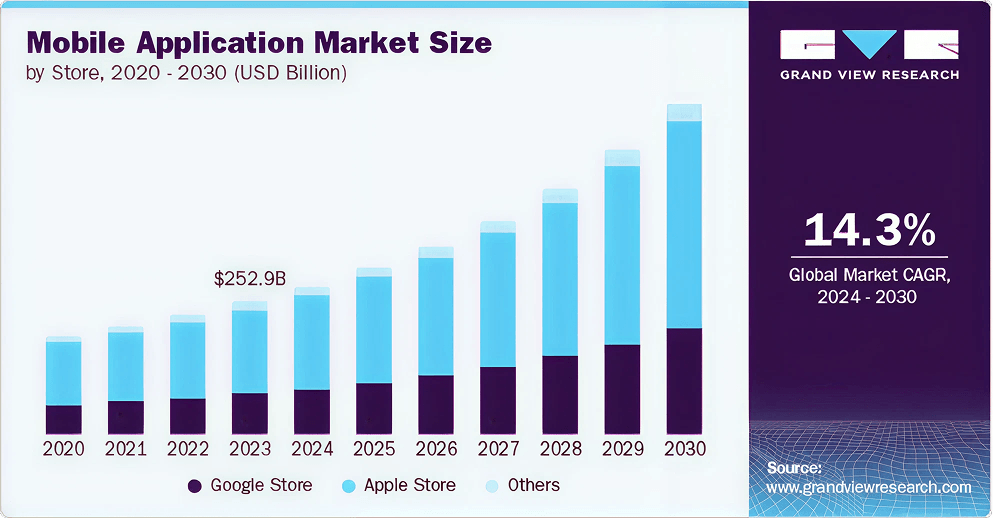
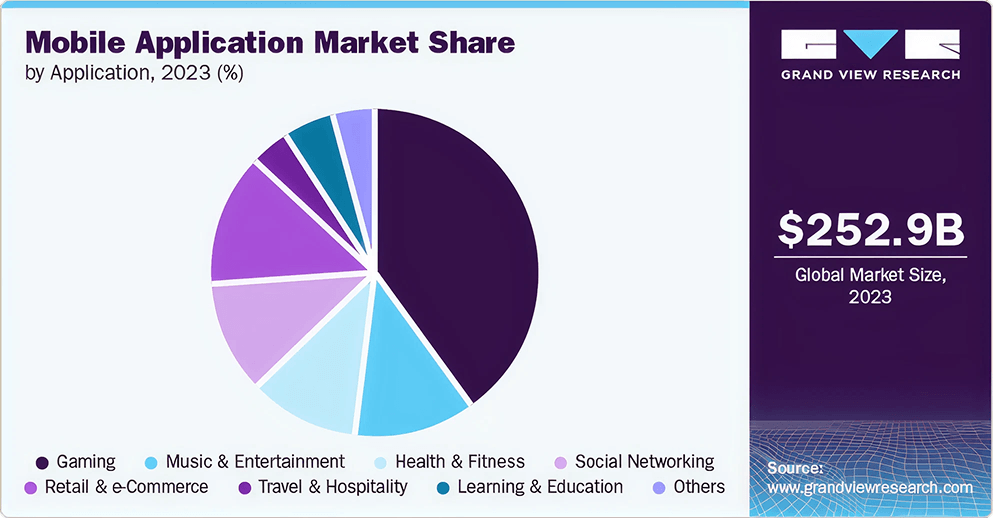
Sources: Source Grand View Research
What Is Mobile Phone Application?
A mobile application (or mobile app) is a software program designed to run on smartphones, tablets, and other mobile devices. Unlike websites, mobile apps are installed directly on your device and can leverage its hardware (like cameras, GPS, or sensors) for richer functionality.
Mobile applications are generally categorized into three main types of phone apps based on their development method and the platform they are intended for
- Native apps
- Hybrid apps
- Progressive web apps
Native Apps
Mobile devices now account for 60% of all web traffic, and with over 2.3 million apps on Google Play and around 1.6 million on the App Store, it's clear that native apps are booming in popularity.
Native apps are developed specifically for a particular platform (either iOS or Android). These apps are written in platform-specific programming languages like Objective-C/ Swift / SwiftUI for iOS or Java/Kotlin for Android.
| Pros | Cons |
|---|---|
|
|
Native apps are best for:
- Performance-intensive apps (3D games, AR/VR experiences)
- Apps needing full device access (health sensors, advanced camera features)
- Platform-specific optimizations (iOS-only or Android-only experiences)
- Enterprise apps requiring maximum security (banking, healthcare)
- Apps where UX is paramount (fluid animations, instant touch response)
Apple Health is an example of an app that requires deep integration with the iOS operating system, utilizing device sensors to track health data such as steps, heart rate, and more.
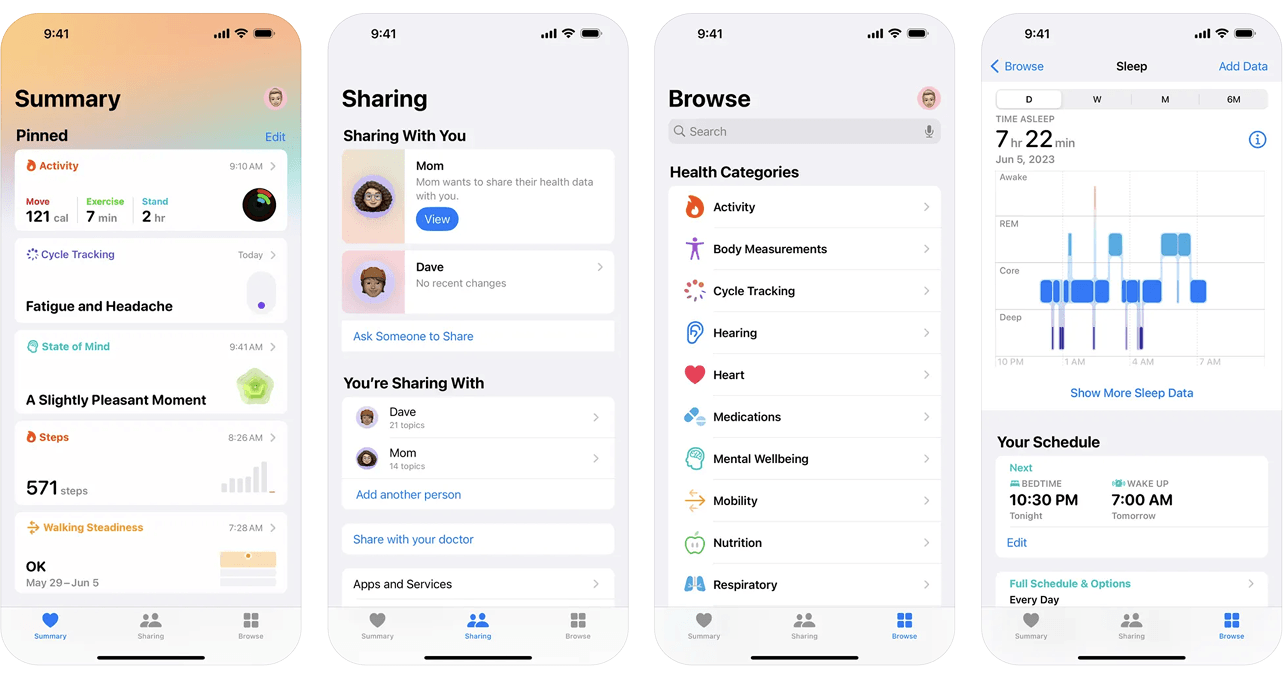
Silk Data has extensive experience in native app development, delivering high-quality solutions tailored to both iOS and Android platforms. Explore some of our successful projects:
- SwatchPAY! - a contactless payment solution integrated into Swatch watches
- LookUP! - a mobile-friendly app for digital content distribution
Whether you're looking for powerful performance or a budget-friendly solution, our experts are ready to bring your idea to life.
Hybrid Apps
Hybrid apps combine the flexibility of web apps with the functionality of native apps. They are built using standard web technologies like HTML, CSS, and JavaScript, but run within a native container. This allows hybrid apps to be installed on devices and distributed through app stores, while still maintaining the ability to function across multiple platforms using a single codebase.
| Pros | Cons |
|---|---|
|
|
Hybrid apps are best for:
- Budget-friendly cross-platform development
- Businesses with a limited budget who still need access to some native device features
- Medium-complexity projects avoiding heavy hardware use
A great example of a hybrid app is Instagram, which combines web technologies within a native shell to deliver a seamless experience across platforms while leveraging device features like the camera.
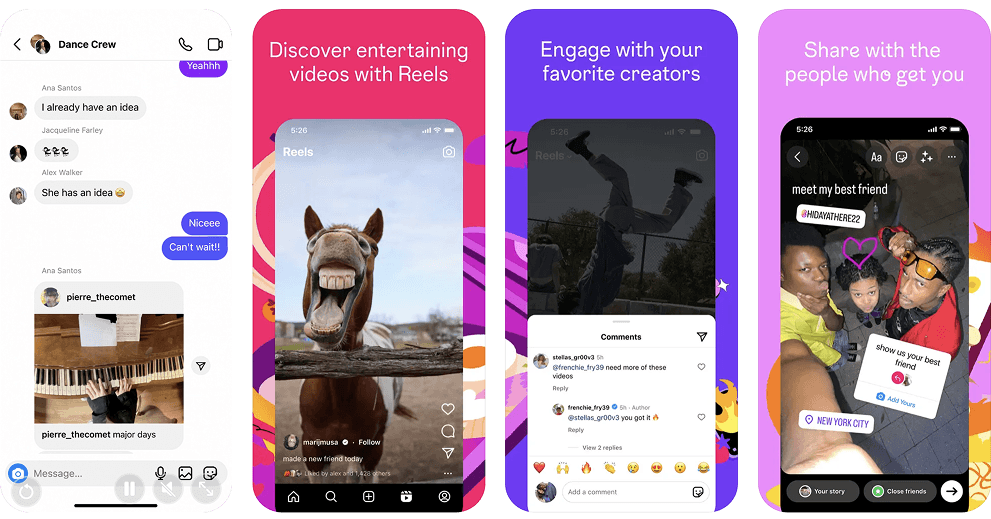
Silk Data has extensive experience in developing high-quality hybrid apps that balance performance and cross-platform compatibility — learn more here.
Cross-Platform Apps
Cross-platform apps are becoming a go-to choice for companies aiming to build mobile apps quickly and cost-effectively. With startups adopting cross-platform development for MVPs and global players like Meta, Alibaba, and BMW using frameworks like React Native and Flutter, this approach is clearly gaining traction.
Cross-platform apps are built using a single codebase that runs on both iOS and Android, but they use native components to ensure better performance and user experience compared to hybrid apps. Popular frameworks include React Native, Flutter, and Xamarin.
| Pros | Cons |
|---|---|
|
|
Cross-platform apps are best for:
- Startups and MVPs that need to launch quickly across platforms
- Business or e-commerce apps with standard UI and moderate logic
- Apps with consistent behavior across platforms (no deep OS integration)
- Budget-conscious projects with small teams
- Apps that need fast updates or iterative development (e.g., social media, event apps)
Duolingo is a great example of a cross-platform app that works seamlessly on both iOS and Android. Built with Flutter, it lets users learn new languages through fun, interactive lessons and challenges.
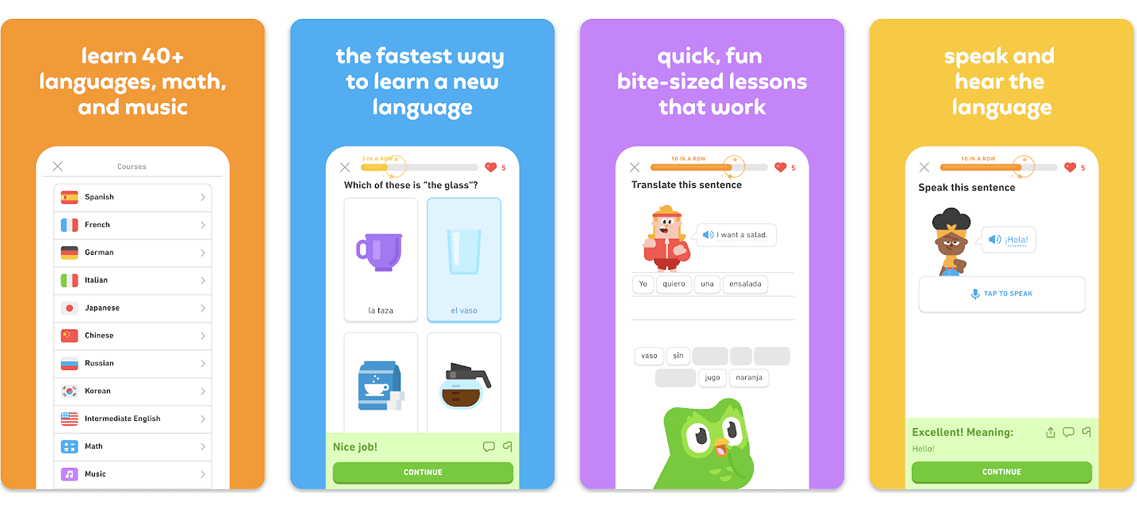
Progressive Web Apps
Progressive Web Apps (PWAs) are an innovative class of web applications that combine the best of both web and mobile apps. Designed to offer a more app-like experience without the need for app store downloads, PWAs provide features like offline access, background sync, and smooth animations. With push notifications and a seamless user interface, they deliver much of the functionality of native apps, but through a browser.
| Pros | Cons |
|---|---|
|
|
Best for:
- Content-driven apps (news, blogs, e-commerce).
- Businesses needing fast deployment without app store approval.
- Startups with limited budgets (cheaper than native/hybrid).
- Apps requiring offline access (e.g., travel guides, note-taking).
An excellent example of a successful PWA is Pinterest, which provides a rich, app-like experience through a web browser, offering offline capabilities and smooth performancewithout needing a dedicated mobile app.

Mobile Apps and AI
The mobile apps we use every day are getting smarter, more intuitive, and increasingly indispensable — and artificial intelligence is the driving force behind this transformation. Let walk you through the keyways AI is enhancing our mobile experiences:

Smarter Personalization
- Recommendation systems now analyze your behavior in real-time (think Spotify's "Discover Weekly" or Netflix's suggestions)
- Machine learning algorithms continuously refine their predictions based on your interactions
- Apps can now anticipate needs before you even search for them

Advanced Voice and Visual Interactions
- Voice assistants like Siri and Google Assistant understand natural speech patterns and context
- Computer vision enables powerful features like augmented reality makeup and clothing try-ons, intelligent photo organization by people, places, and objects

Proactive Assistance and Automation
- Shopping apps predict what you might need next (Amazon's anticipatory shipping)
- Financial apps detect unusual spending patterns to prevent fraud
- Calendar apps can now schedule meetings based on email content

Always-Available Support
- AI chatbots handle up to 80% of routine customer inquiries
- Sentiment analysis ensures responses match the user's emotional state
- Available 24/7 with consistent quality

Next-Level Security
- Biometric authentication that adapts to your unique characteristics
- Behavioral analysis to detect compromised accounts
- Real-time fraud prevention for financial transactions
Today, AI integration has moved from a "nice-to-have" to a fundamental requirement for any competitive mobile app. At Silk Data, we specialize in blending cutting-edge AI capabilities with mobile app development to create intelligent, future-ready solutions.
Turning Clicks Into Cash: The Art of App Monetization
Building an amazing app is only half the battle. The other half? Choosing the right money-making strategy that feels natural to your users rather than intrusive. Subscription models are having a moment right now, and for good reason. They turn one-time users into loyal customers who pay month after month. But they only work if you're consistently delivering fresh value — something media apps like Netflix and Spotify have mastered. Then there's the freemium model, where the companies hook users with a free version and tempt them with must-have premium features.
But here's what many developers miss: monetization isn't a one-size-fits-all decision. A gaming app might thrive with in-app purchases for virtual goods, while a fitness app might do better with a subscription for premium workouts. The most successful apps often mix and match — maybe some tasteful ads combined with optional paid upgrades.
The golden rule? Your monetization should enhance the user experience, not detract from it. Because at the end of the day, an app that people love will always find a way to pay its way.
Choosing the Right Type of App for Your Business
| Factor | Native App | Hybrid App | PWAs |
|---|---|---|---|
| Budget & Timeline | High cost, longer development time | Moderate cost, faster development | Low cost, fastest development |
| User Experience (UX) | Best performance, smooth UX | Good UX (near-native with frameworks) | Limited UX (depends on browser) |
| App Features | Full access to device features (GPS, camera, etc.) | Partial access (via plugins) | Limited access (browser-dependent) |
| Scalability | Requires separate development for iOS & Android | Single codebase for multiple platforms | Easily scalable (web-based) |
| Offline Functionality | Works offline (if designed) | Limited offline support | Requires internet connection |
| Maintenance | High (separate updates for each OS) | Moderate (single codebase) | Moderate (single codebase) Low (server-side updates) |
| Performance | Fast, optimized for OS | Moderate (depends on framework) | Slower (browser-dependent) |
| Monetization Potential | High (in-app purchases, subscriptions, ads) | Moderate (supports in-app purchases) | Low (monetization models are limited) |
Wrapping Up
The mobile app landscape in 2025 is all about aligning your objectives with the right technology. If you need blazing-fast performance and tight integration with device features, native apps are your best bet. Looking to balance cost with functionality? Hybrid apps became a great solution. If broad reach and simplicity are your priorities, PWAs are the way to go.
But remember: the best app isn’t just about code — it’s about solving real problems for real people. Whether you’re building the next AI-powered health coach or a seamless shopping experience, let user needs guide your choice. And with AI now table stakes, integrating smart features isn’t optional — it’s how you stay relevant.
Our Solutions
We work in various directions, providing a vast range of IT and AI services. Moreover, working on any task, we’re able to provide you with products of different complexity and elaboration, including proof of concept, minimum viable product, or full product development.




















